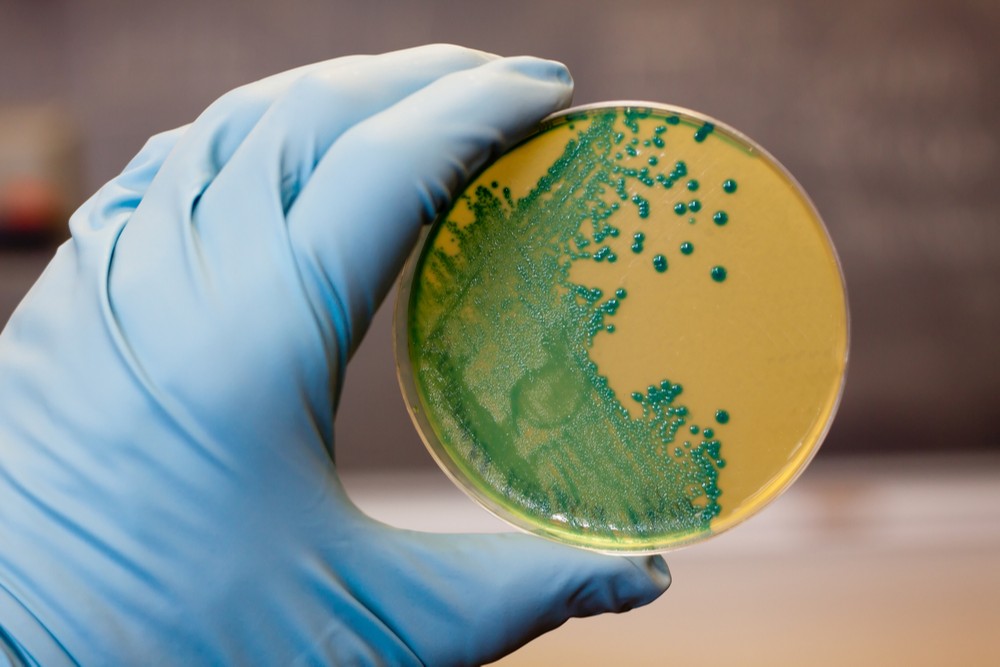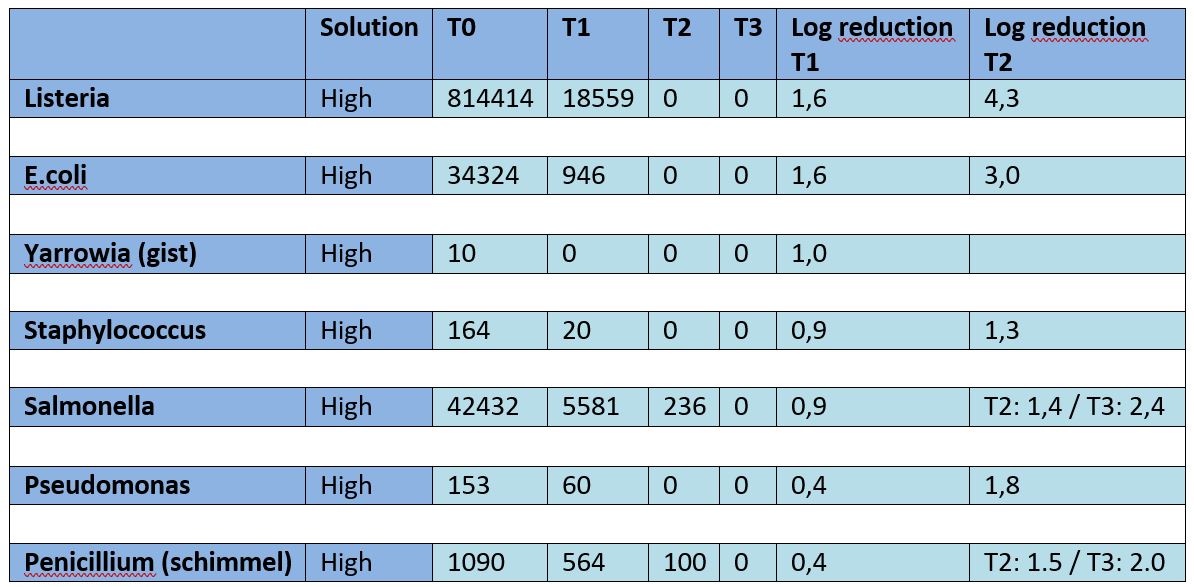
Listeria infection is at the top of the list of serious infections. If your company is affected, the consequences are almost incalculable. At such a moment, you are diligently looking for solutions to get the Listeria out of your company as quickly as possible. Better make sure that the Listeria doesn't get a chance! There is a method that is very effective against microorganisms and can therefore prevent nasty infections, providing operational reliability and safety.
To investigate the effectiveness of a disinfection method, Nutrilab has carried out a number of tests. The method, in which a dry vapour consisting of OH¯ ions enters into an oxidation with the micro-organisms, has been approved by the CTGB and is permitted in the food industry.

T0 = Starting situation
T1 = after 1st treatment with Nocotech with 1 ml/m³ (minimum dosage)
T2 = after 2nd treatment with Nocotech with 1 ml/m³ (minimum dosage)
T3 = after 3rd treatment with Nocotech with 1 ml/m³ (minimum dosage)
With this method it is possible to use different doses. But how effective is this method with the lowest dosage? Nutrilab has investigated it. They have chosen 7 different microorganisms that are most common in the food industry; Listeria, E-Coli, Yarrowia Yeast, Staphylococcus, Salmonella, Pseudomonas and Penicillium Mold.
Some plates were contaminated with this and the disinfection was then applied at the minimum dosage.
After 1 treatment, in which only 1 ml of liquid per m³ was used, a large (log) reduction was already achieved. After the second treatment, most microorganisms were gone. Only Salmonella and Penicillium needed a 3rd treatment. This is because these are fast-growing microorganisms and therefore had grown again within 24 hours.
In this laboratory setup, the OH¯ ions were able to oxidize optimally with the microorganisms. After all, they were freely accessible on the Petri dishes. However, it does indicate that this method is extremely effective against any micro-organism, even in a practical situation. The microorganisms can often be found in hard-to-reach places. Because of the dry vapour that is everywhere and the moving OH¯ ions, the hard-to-reach places are reached as well. However, proper cleaning is and remains important for the proper functioning of this method.
Furthermore, this disinfection method does not give any residue, so rinsing is not necessary, it does not give any resistance due to the oxidation process and it is environmentally friendly.
Want to know more? Call Hugo ter Hoeve 06 54 262 195 or Robert Kostrubiec 06 25 084 668 or take a look at our website.
Translated with www.DeepL.com/Translator
Source: ©ggw1962/Shutterstock.com;